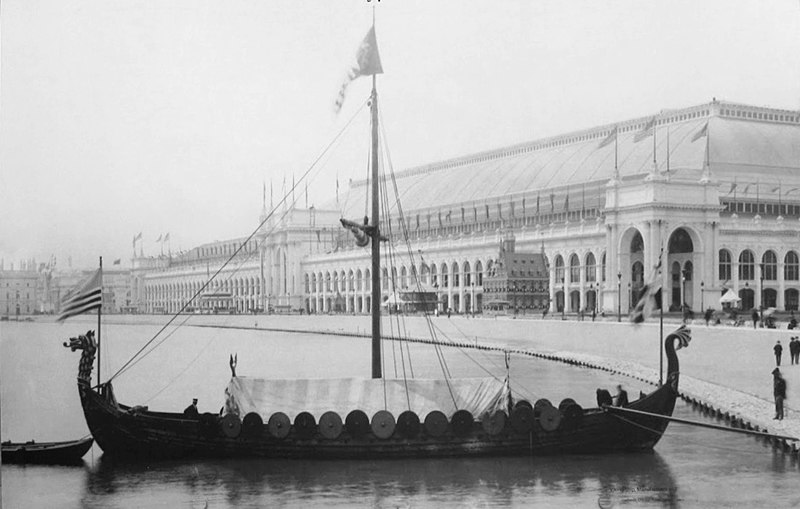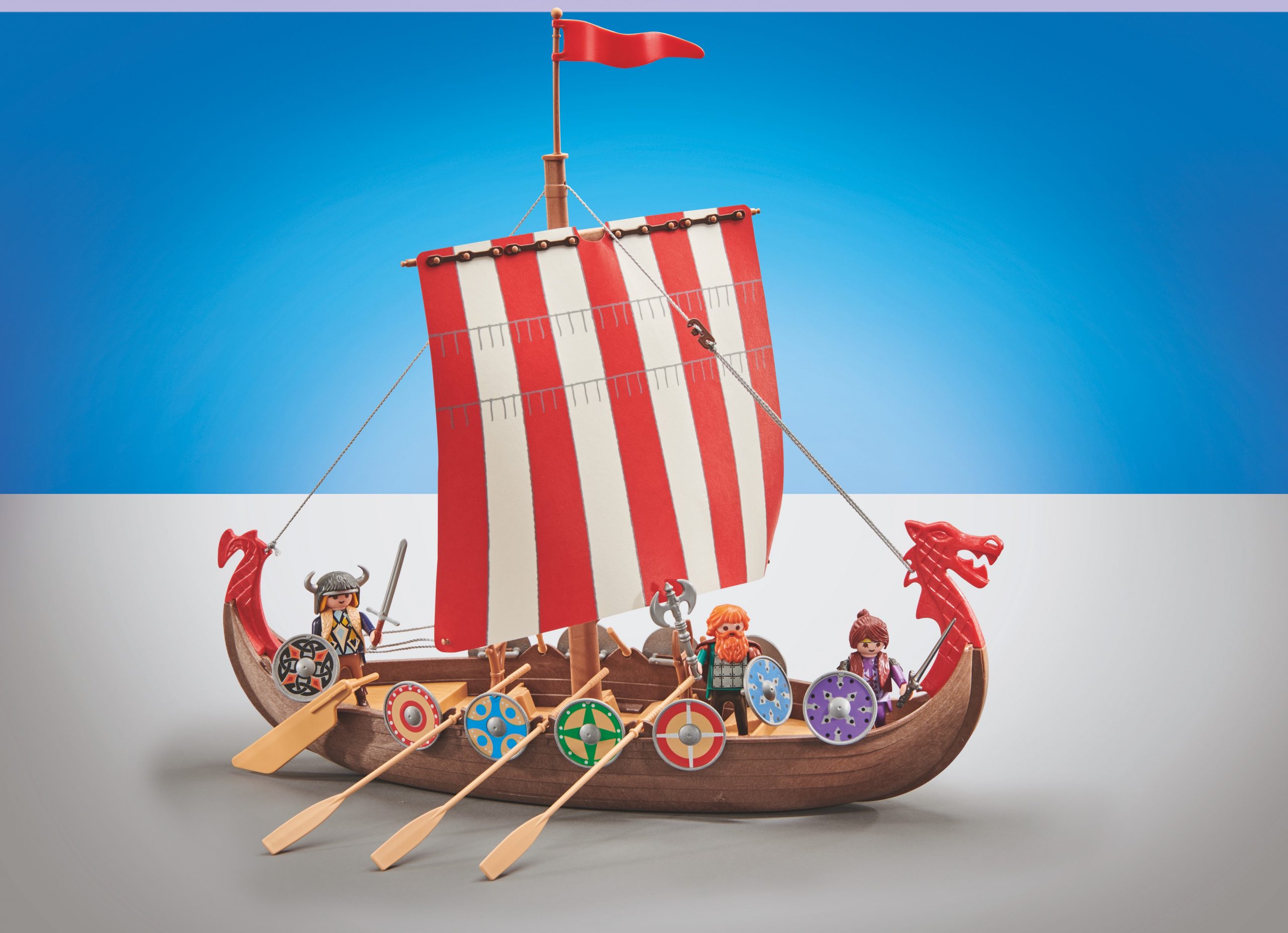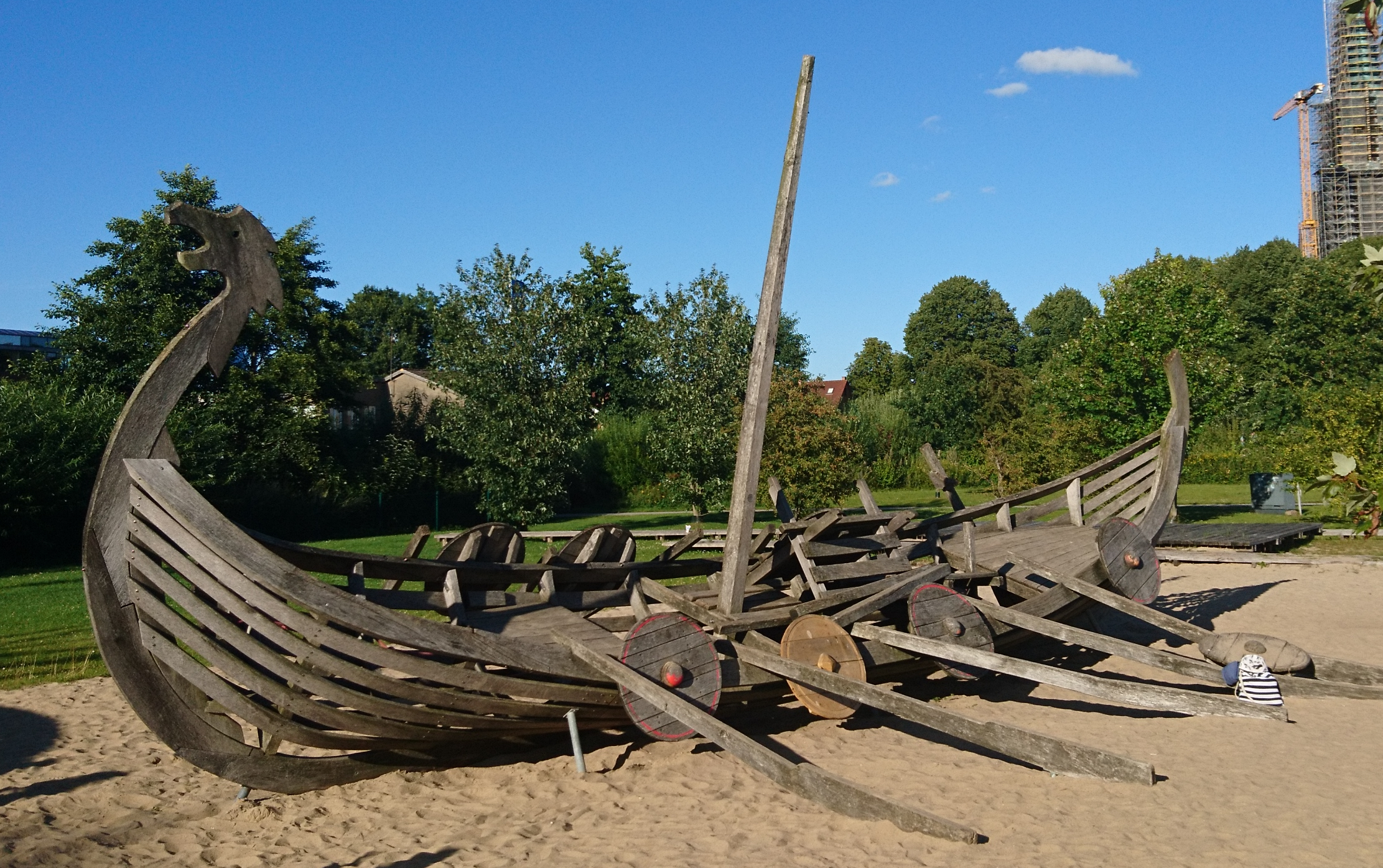The 'Viking'
Assassin’s Creed:
Valhalla
The Vikings: A Myth between Pop Culture and Culture of Remembrance
The Vikings are omnipresent in pop culture. Most people will recognize a Viking – for example by a horned helmet – or will be able to identify a Viking ship: The long and narrow shape, the shields on the railing, rudders as well as sails, often with red and white stripes, and the dragon's head attached to the front of the ship (on the stem) – these are the typical attributes. These pictures often illustrate the idea of explorers, plunderers and conquerors who ravaged the world on their warships. These portrayals, however, tell more about our view of history than about historical realities. But where do these stereotypes come from and how authentic are they? This is what this exhibition is about, presenting the Viking myth as a brand, as a place of longing and as a source of identity.
Gokstad ship
Playground
PLAYMOBIL-Viking ship
Gokstad ship
The 'Gokstad ship' was excavated in 1880 near Gokstad in Norway. It was part of an elaborately arranged burial of the 9th century CE. The wooden ship is approx. 23.5 m long and could be rowed and sailed.
For a long time the 'Gokstad ship' was considered a typical Viking ship. However, no evidence of Dragonheads was found on the stems. Today, diverse ship finds illustrate a more diverse picture of the Viking Age: There were not only warships, but also merchant ships and smaller coastal ships, which were probably used for transportation and fishing.

The so-called Gokstad ship in the ‘Vikingskipshuset’ in Oslo. | © Museum of Cultural History, University of Oslo, Norway. Photographer: Unknown. Lizenz: CC BY-SA 4.0
Object details:
Object: Gokstad ship
Find location: Gokstad, Norway
Location today: Oslo, Norway
Material: Wood
Dating to 900 CE
The 'Viking'
The 'Viking', a replica of the 'Gokstad ship', was built in Norway in 1891. The crew crossed the Atlantic with the 'Viking' to prove that Viking ships were seaworthy and to present Norway at the World Fair in Chicago.
At first glance, the replica looks like the original, but there are several differences: the stem is decorated with a dragonhead, a tent is set up on deck, and a foresail was installed (not displayed in the picture). Archaeologically, these attributes have not been proven– but does this make the replica less authentic?
The replica itself was the model for later portrayals, for example in the encyclopaedia 'Nouveau Larousse illustré' of 1898 and in the comic 'Asterix and the Normans' of 1967. Both portrayals of Viking ships have similarities with the 'Viking': they have a striped sail, shields on the railing and an animal head on the stem. They also have a tent on deck and a fore sail. Today there are many other ship replicas based on Viking Age finds, which are sometimes used for experimental purposes, for example to understand sailing characteristics.

The 'Viking', replica of the Gokstad ship, at the Chicago World’s Fair 1893.
Object details:
Object: The 'Viking'
Material: Wood
Dating to 1891 CE
PLAYMOBIL-Viking ship
Historical stereotypes are long-lasting. PLAYMOBIL produced a Viking dragon ship in 2002 and the current collection includes Vikings and a Viking ship: The toy ship is made of synthetic material, but design and colour of the ship recreate a wooden look. Obviously the 'Viking' and the 'Gokstad ship' served as models.
The decorated stems are striking: dragonhead and tail give the impression of a 'dragon ship'. Shields are attached to the railing; the sail is red-white striped – frequently used attributes in the portrayal of Viking ships. On deck of ship there are men and a woman who can be identified as ‘Vikings’. One of the figures wears a horned helmet, another symbol for Vikings. However, no archaeological evidence of horned helmets exists.

A 'Viking ship' by PLAYMOBIL from the current collection (status 2020) | © PLAYMOBIL/geobra Brandstätter Stiftung & Co. KG.
Object details:
Object: PLAYMOBIL-Viking ship (Article 9891)
Material: Synthetic material
Dating to 2020 CE
'Assassin’s Creed: Valhalla'
In digital media, the Viking Age is a popular setting for story telling. One of the latest digital games is 'Assassin's Creed: Valhalla' by Ubisoft.
Screenshots and trailers give a first impression of the Viking world portrayed here: It is a rough world where war prevails and where adventures can be experienced. The appearance of the Vikings suggests similarities to current TV series and differs from older portrayals of Vikings (such as Playmobil).
The ships, however, contain the familiar symbols – such as dragonhead and indicated tail. In addition, details such as colourfully painted boats, sails with motifs and carvings are also presented to create a denser atmosphere.

'Assassin’s Creed: Valhalla' – Ubisoft advertises to become a legendary viking warrior. | © 2020 Ubisoft Entertainment. All Rights Reserved. Assassin’s Creed, Ubisoft, and the Ubisoft logo are registered or unregistered trademarks of Ubisoft Entertainment in the US and/or other countries.
Object details:
Object: PC game cover of 'Assassin’s Creed: Valhalla'
Material: Digital illustration
Dating to 2020 CE
Playground
In contrast to opulent and detailed Viking games, the reduction to typical attributes is characteristically for this wooden Viking ship climbing frame on a playground in Schleswig.
The construction behind the mast is interesting: it resembles the burial chamber found on the 'Gokstad ship'.
It is no coincidence that the ship is located in Schleswig: The city markets itself as a 'Viking city'. Historically, it was not a Viking town, but rather the medieval successor settlement of the Viking Age site at Haithabu, which was located on the other side of the Schlei opposite Schleswig. Today, Vikings were and are a source of identity for the city of Schleswig, recognizable in the cityscape and also in marketing, where direct and indirect references to the Vikings are made.

A Viking ship in front of the Schleswig Cathedral – A climbing frame on a playground. | © T. Schade.
Object details:
Object: A Viking ship in front of the Schleswig Cathedral – A climbing frame on a playground
Location: Schleswig, Germany
Material: Wood
Dating unknown. Photo taken in 2020 CE